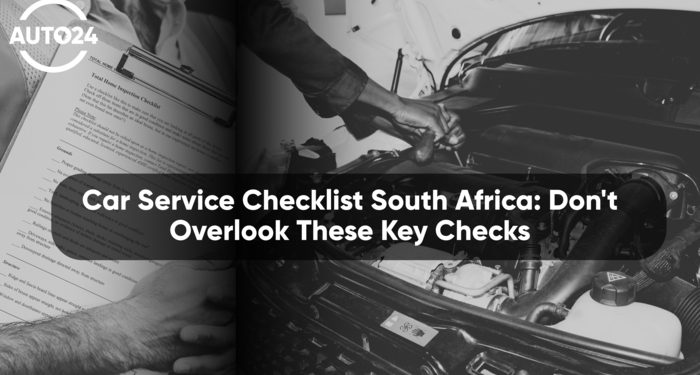Keep Your Car Healthy, Keep Yourself Safe
Regular servicing isn’t just about ticking boxes—it’s about keeping your vehicle running safely, efficiently, and cost-effectively. In South Africa, with its diverse road conditions and climate extremes, staying on top of routine car maintenance is essential. Miss a few key checks, and you could find yourself stranded, facing a hefty repair bill, or worse, compromising your safety.
Whether you’re a seasoned driver or a first-time car owner, this in-depth guide will walk you through every critical element of car servicing in South Africa—what to check, when to do it, and why it matters.
1. Engine Oil and Oil Filter: The Lifeblood of Your Car
Your engine oil lubricates the moving parts of the engine, reducing friction and wear. Over time, it becomes dirty and loses its effectiveness. Replacing both the oil and oil filter during service prevents premature engine damage.
- How often? Every 10,000 to 15,000 km or annually, depending on your car model and oil type.
- Warning signs: Dark, thick oil; engine knocking sounds; oil warning light.
2. Air Filter: Breathe Easy
The air filter keeps dust, dirt, and other contaminants out of the engine. In South Africa’s dusty conditions, it can clog quickly, impacting fuel economy and performance.
- How often? Every 15,000 to 30,000 km—or more frequently if you drive on gravel roads.
- Warning signs: Decreased acceleration; higher fuel consumption.
3. Cabin/Pollen Filter: Clean Air for You
The cabin filter purifies the air that enters your car’s interior through the heating and air-conditioning system. This is crucial for allergy sufferers or anyone driving in polluted areas.
- How often? Once a year or every 15,000 km.
- Warning signs: Unpleasant smells from vents; reduced airflow.
4. Spark Plugs: Keep the Engine Firing Smoothly
Spark plugs ignite the fuel-air mixture in the engine. Faulty plugs can cause poor fuel efficiency, engine misfires, and sluggish performance.
- How often? Every 30,000 to 100,000 km (check your owner’s manual).
- Warning signs: Rough idling, starting trouble, decreased power.
5. Brake Pads and Discs: Your First Line of Safety
Brakes are arguably the most critical safety component in your car. Pads wear down with time and use, especially in urban stop-and-go traffic.
- How often? Inspect every 10,000 km; replace pads every 30,000 to 50,000 km.
- Warning signs: Squeaking/squealing sounds, vibration when braking, longer stopping distance.
6. Battery Health: Stay Charged
South African heat can reduce battery life. Regular checks help avoid inconvenient breakdowns.
- How often? Every service—test for voltage, terminals, and corrosion.
- Warning signs: Slow engine crank; dimming headlights; warning light.
7. Coolant and Radiator: Beat the Heat
Coolant keeps your engine from overheating. A failed cooling system can lead to engine failure—especially on long summer drives.
- How often? Top up when needed; flush and replace every 2 years or 30,000 km.
- Warning signs: Engine overheating; sweet smell from engine bay; low coolant level.
8. Transmission Fluid: Smooth Shifting
Whether you drive a manual or automatic, transmission fluid is crucial for gear changes. Dirty or low fluid can lead to costly repairs.
- How often? Typically every 60,000 to 100,000 km.
- Warning signs: Difficulty shifting gears; gear slipping; strange noises.
9. Belts and Hoses: Small Parts, Big Consequences
Drive belts and hoses power many components like the alternator, power steering, and A/C. If one breaks, you’re in trouble.
- How often? Inspect every 20,000 km or during each service.
- Warning signs: Cracks, fraying, squealing noises, fluid leaks.
10. Tyres: Your Only Contact with the Road
Regular tyre maintenance is vital for safety, fuel economy, and ride comfort. In South Africa, road conditions can vary dramatically, so tyre checks are non-negotiable.
- How often? Monthly pressure checks; rotate every 10,000 km; replace when tread is below 1.6 mm.
- Warning signs: Uneven wear, vibrations, reduced grip, bulges.
11. Suspension and Steering System
Suspension parts wear down over time, especially on rough roads. Faulty suspension can impact handling and ride comfort.
- How often? Inspect during annual service or when experiencing symptoms.
- Warning signs: Bumpy ride; pulling to one side; uneven tyre wear.
12. Lights, Wipers, and Electrical Checks
Safe driving means being seen and having clear visibility. Check all lights, indicators, and windscreen wipers.
- How often? Every 6 months or before long trips.
- Warning signs: Flickering lights; streaky wipers; electrical malfunctions.
13. Exhaust System: Don’t Ignore the Rumble
Leaks or rust in the exhaust can affect engine performance and increase emissions.
- How often? Inspect annually.
- Warning signs: Loud noises; black smoke; visible rust or holes.
14. Wheel Alignment and Balancing
Misalignment causes uneven tyre wear and poor handling. It’s crucial after hitting a pothole or curbing your car.
- How often? Every 10,000 km or if the car pulls to one side.
- Warning signs: Uneven tyre wear; steering vibration; off-centre steering wheel.
15. Software and ECU Updates (Modern Cars)
Many newer vehicles rely on electronic control units (ECUs). Routine service may include diagnostic checks and software updates.
- How often? As recommended by manufacturer; often at dealership services.
- Warning signs: Dashboard warning lights; laggy infotainment; erratic behavior.
Bonus Tip: Keep a Maintenance Log
Track your services, parts replacements, and repairs. This helps with:
- Better resale value
- Warranty tracking
- Spotting recurring issues
Conclusion: A Serviced Car Is a Safe Car
South Africa’s road conditions, weather, and driving habits make regular vehicle maintenance more important than ever. A proper service is not just about following a schedule—it’s about understanding what your vehicle needs to stay reliable, efficient, and safe.
Print this checklist, keep it in your cubbyhole, and refer to it before every major service. It could save you money—and your life.





